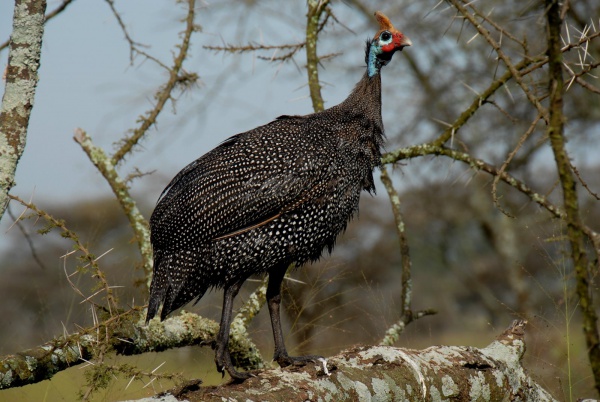Facts About Helmeted guineafowl
The helmeted guineafowl is a familiar sight in Africa, particularly in regions south of the Sahara. It is the sole species in the genus Numida and belongs to the guineafowl family, Numididae. Over the years, this bird has dispersed beyond Africa to locations such as the West Indies, Brazil, Australia, and Europe.
There are nine recognized subspecies of the helmeted guineafowl, each inhabiting different parts of its range. This medium-sized bird is distinctive with its gray-black body adorned with white spots, a bare head topped with a bony knob, and short wings and tail.
These birds are quite social, often forming flocks when they are not breeding. They are known for their tick-eating habits and prefer to stay on the ground, where they are excellent runners. When startled, they emit loud calls. Their diet is diverse, consisting of both plants and small animals.
Helmeted guineafowl breed seasonally, with the peak breeding season occurring in summer. They create well-hidden nests on the ground, and females lay between six to twelve eggs. The eggs are incubated for about 26 to 28 days.
These birds thrive in warm, dry, open areas with scattered shrubs and trees, such as savannas and farmlands. In suburban areas, they have adapted well, often roosting on roofs and foraging in gardens, although they can sometimes become a nuisance to residents.

 Ivory Coast
Ivory Coast